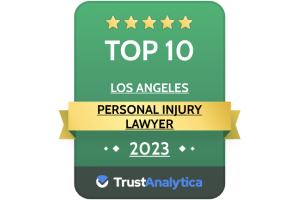- Free Consultation: 866-966-5240 Tap Here To Call Us
Fractures Caused by Trauma
Fractures are one of the most common types of injuries that affect the skeletal system. They occur when there is a break or a crack in a bone. Fractures can vary in severity, location, and the way the bone fragments are aligned. In this blog post, we will provide an overview of various types of fractures, including stable, open, displaced, transverse, oblique, spiral, comminuted, segmental, greenstick, and avulsion fractures.
Types of Fractures
- Stable Fracture: Stable fractures can occur as a result of various traumatic incidents. For example, a fall from a height or a direct blow to a bone during a car accident can cause a stable fracture. The impact may generate enough force to break the bone, but the fragments remain aligned and in close proximity.
- Open Fracture: Car accidents and falls can lead to open fractures when the force exerted on the bone is significant enough to break through the skin. The bones can protrude out of the body, exposing them to potential contaminants and increasing the risk of infection.
- Displaced Fracture: In high-impact accidents or falls, the forces involved can cause displaced fractures. For instance, if a person falls and lands awkwardly, the bone may break and the broken ends can be pushed out of their normal alignment. Displaced fractures may also occur in car accidents due to the sudden deceleration or impact forces involved.
- Transverse Fracture: Transverse fractures commonly occur in car accidents or falls when a bone experiences a direct blow or is subjected to excessive force along its horizontal axis. For example, in a car accident, a direct impact to the leg against the dashboard or a side impact collision can result in transverse fractures.
- Oblique Fracture: Oblique fractures are often the result of a combination of rotational and bending forces. In a car accident or a fall, these fractures may occur when the force applied to the bone is not purely axial. For instance, if a person falls and lands with their arm outstretched, the bone may break at an oblique angle due to the bending and rotational forces involved.
- Spiral Fracture: Spiral fractures can be caused by twisting forces, such as those experienced in car accidents or falls. For instance, if a person’s foot is trapped and forcefully twisted in a car accident, it can lead to a spiral fracture of the leg bone. Similarly, a fall from a height with a twisting motion can result in a spiral fracture of the arm or leg bones.
- Comminuted Fracture: High-energy trauma, such as a severe car accident or a fall from a significant height, can generate substantial forces that cause comminuted fractures. The impact can shatter the bone into multiple fragments. This type of fracture is often seen in accidents involving high-speed collisions or falls from great heights.
- Segmental Fracture: Segmental fractures can occur when a bone experiences multiple breaks, resulting in separate bone segments. These fractures are more likely to occur in traumatic events involving extreme forces, such as car accidents or falls from significant heights.
- Greenstick Fracture: Children’s bones are more flexible than adults’, making them prone to greenstick fractures. Traumatic events, including car accidents or falls, can cause bending forces on the bones, leading to partial breaks similar to bending a green twig. The impact may cause the bone to bend and crack on one side while remaining intact on the other.
- Avulsion Fracture: Avulsion fractures can occur during sudden, forceful movements. In a car accident or a fall, when a person’s joint is forcibly extended or flexed, the attached ligament or tendon can pull away with enough force to fracture a small piece of bone from its attachment site.
In summary, traumatic incidents like car accidents or falls can subject the bones to varying degrees of force, resulting in different types of fractures. The specific mechanics of the event, the direction and magnitude of the forces involved, and the strength of the bone all contribute to the type of fracture sustained.
Importance of Hiring an Experienced California Personal Injury Attorney When You Sustain a Fracture from a Car Accident or Fall Caused by Negligence
If you or a loved one have experienced a fracture due to a traumatic incident like a car accident or fall, it’s crucial to seek appropriate medical attention and support. In many cases, these injuries can have long-term consequences and may require extensive medical treatment and rehabilitation.
Additionally, if the accident was caused by someone else’s negligence or wrongdoing, you may be entitled to compensation for your medical expenses, pain and suffering, lost wages, and other damages. Navigating the legal aspects of a personal injury claim can be complex, which is why it’s essential to consult with an experienced personal injury attorney.
A skilled personal injury attorney can provide valuable guidance, assess the circumstances of your case, gather evidence, negotiate with insurance companies, and represent your interests to help you obtain the compensation you deserve. They can handle the legal complexities while you focus on your recovery.
Remember, time is of the essence when it comes to personal injury claims. Statutes of limitations and other legal deadlines can limit your ability to seek compensation if you delay. Take the first step towards protecting your rights by contacting Steven M. Sweat, Personal Injury Lawyers, APC, a reputable California personal injury law firm with much experience in seeking compensation for accident victims who have sustained fractures as a result of car accident, falls and other traumatic events. We can assist in evaluating whether the incident was due to negligence and if a personal injury claim would be warranted under California Law. Call 24/7 at 866-966-5240












